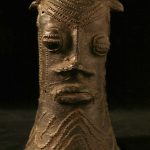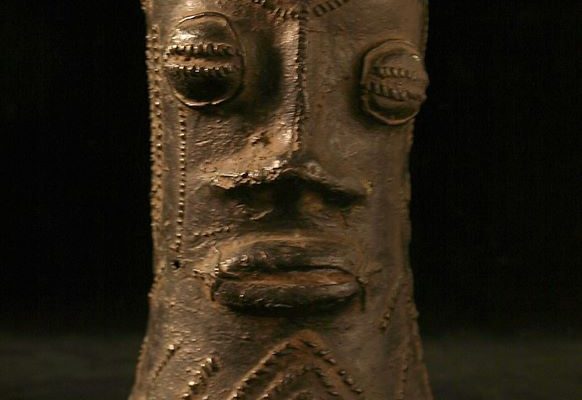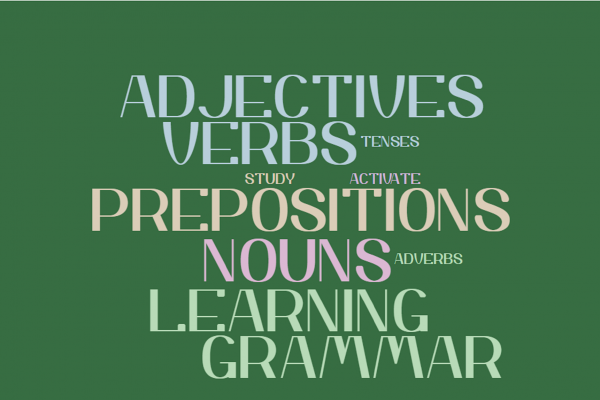THE SEVEN IGALA VOWELS IN DETAIL
Igala vowels are not static. Rather, they are highly mobile, as they alter their sounds frequently in speech. For instance, a high-sounding vowel is used when a speaker suddenly realizes that he has mistakenly left something behind; and he exclaims: “Óóó! Ú gbényọ́ọ̀!” (Oh, I forgot). Note that the speaker’s voice pitch is high. The next minute, he is responding to a proposal; and he gives his consent, saying: “Ooo.” (Okay; Alright by me). Here, he adopts a middle tone – neutral, not high and not low.
Then, in response to a question, “What is the size?” posed to him; he is wont to reply: “Òkòkòlò ì che.” (It is circular). Here, note the repeated ‘Low’ tone in the word, “Òkòkòlò.” The speaker’s voice pitch is low, sounding grave. I
These changes indicate the behaviour of the vowel in the Igala tonal language. One minute, it is high; the next, it changes to mid tone; then, it goes low.
THREE LEVELS OF VOWEL CHANGE IN IGALA SPEECH
Each of the seven Igala vowels has a capacity to change its tone a minimum of five different ways: High, Mid, High-Mid, Low and Extra-high tones.
At this preliminary stage of our study of Igala phonology we are going to restrict ourselves to the three dominant ones among them:
(High, Mid and Low).Below, we will take one vowel at a time and explain how it changes its tone in three different ways mentioned above.
1. THE VOWEL, ‘A’
In English language, the letter ‘a,’ pronounced /ay/, is an indefinite article; but, in Ígáláà, one of Nigeria’s many tonal languages, only tone determines meanings. The vowel, ‘a’ is not an article in Igalaa. Rather, it is a particle; but it has the capacity to influence! a variety of meanings.
(i) When it takes on a high tone, ‘á’ serves as an auxiliary verb, ‘will.’ E.g. Nà áwá ọ̀na. (I will come tomorrow).
(ii) When it is midtoned, letter ‘a’ serves as a personal pronoun, ‘a’ (we), indicating advice, urgency or appeal. E.g. A m’ú du tà. (Let us sell it). A du tà ké. (Let us sell it now).
(iii) When pronounced with a Low tone, ‘à’ is a personal pronoun (indicating past tense). À kpó jọ-anẹ̀; à f’ẹñwu jẹ. (We sat down; we ate something).
2. THE VOWEL ‘E’
Pronounced /é/, this vowel sound, like the others, occurs at three tonal levels.
- High tone ( ́). E.g. wé (to stop; égbé (grass); kékélé (to be small).
- Mid tone ( ). E.g. Eee (Yes, okay); Awa. (Hello); kpologodoo (to be empty). Gba-ọtákída. (Read a book).
- Low tone ( ̀). E.g. lè (went); dè (to guard); yègèyègè (to be scanty); etc.
3. THE VOWEL ‘Ẹ’
The three levels of occurrence of the vowel sound ‘ẹ’ are: (i) High tone ( ́). E.g. jẹ́ (to accept); fẹ́ (to be clean); kpẹ́ (to share).
(ii) Mid tone ( ). E.g. ẹ, wẹ (you (singular pronoun); jẹ (to eat).
(iii) Low tone ( ̀). E.g. dẹ̀ (to shine); gbẹ̀ (to be great); gwẹ̀ (to wash).
4. THE VOWEL, ‘I’
The sound ‘i,’ pronounced /i:/, may be easily confused with the English ‘e’ (as in ‘bee,’ ‘see,’ ‘free,’ etc. Its triple levels of change are:
(i) High tone ( ́). E.g. mí (to rest); lí (to see); hí (to weave); nyí (to create).
(ii) Mid tone ( ). E.g. fii (distantly); kiili (completely); kpiligidii (fiercely)
(iii) Low tone ( ̀). E.g. hì (to cook); jì (to tie/bury); mì (to swallow); etc.
5. THE VOWEL ‘O’
Pronounced /o/, this vowel occurs in the domains of the three tones as follows:
(i) High tone ( ́). E.g. óbó (soup); ógbó (old age); óló (poison); ólóló (too much);
(ii) Mid tone ( ). (Here, do It remember our Empty space sign?). E.g. Ooo (Okay; alright, I agree, affirmative). E.g. Ooo, ú gbọ́. (Alright, I have heard).
(iii) Low tone ( ̀). E.g. òdò (yellow); ògòdò (to be watery instead of being solid); òkpò (fright); òtò (a large gourd water); òyò (shooting star).
6. THE VOWEL, ‘Ọ’
The triple levels of the vowel, ‘ọ,’ pronounced /ɔ/ are:
(i) High tone ( ́). E.g. ọ́dọ́ (year); Ọ́jọ́ (God); ọ́lọ́ (deformity); ọ́kọ́ (money); ọ́rọ́ (flesh); ọ́wọ́ (hand), etc.
(ii) Mid tone ( ). nọ (to stiffen); rọ (to roast); tọ (to leap); wọ (to pull out); gbọọlọ (to be long). (Also kọọlọ); etc.
(iii) Low tone ( ̀) E. g. yọ̀ be joyful); kọ̀ (to refuse); nyọ̀ (to be good); etc.
7. THE VOWEL, ‘U’
The three tonal levels of the occurrence of letter ‘u,’ pronounced /u/, are as follows:
(i) High tone ( ́). E.g. tú (to untie); gwú (to pound); kwú (to die); mú (to arrest); úlú (seed).
(ii) Mid tone ( ). E.g. du (to take); lu (to extinguish); kwu (to slaughter); etc.
(iii) Low tone ( ̀). E.g. dù (to defeat); fù (to grow); gwù (to climb); lù (to smell).
INTRODUCING TONE IN WRITTEN IGALA
“Marking tone?” an astonished Igala writer would ask. “How do you do that?” Then, you hear this reply:
“Oh Yes, these days, we read and record a speaker’s voice pitch, as it moves up and down while he speaks.”
“È-é!” he exclaims. “Tẹ̀kìnọ́lọjì, agba-oo.” (Thanks to Technology).
Actually, tone marking is not a new phenomenon. The Yoruba use it in their many indigenous texts. To them, tone and tone-marking are second nature. However, it is not so for the Igala writer, to whom tone marking is seen to be a strange, or a new style of writing. “These tiny signs you people usually place on the vowels, what are they called?” they would ask, confused.
The students should pay attention to the sound coming out of their mouths. We ask them to:
“Listen to yourselves as you utter these words and make a conscious effort to pronounce every word slowly.”
Ask the learners to identify the position of the voice pitch in the words that you articulate to their hearing.
Do not rush.
Sometimes, you observe that there are two or more tones combining inside one word, depending on how long or short it is. When you listen carefully to the sound units (syllables), you will discern whether the tone – or tones – is/are Up or Down or hanging Mid-/way. Up and down).”
IGALA AND YORUBA ORTHOGRAPHY APPROVALS
It should be noted, in retrospect, that Yoruba and Igala Orthographies were approved about the same time in the early 1930s by the Colonial Administration. The Igala Orthography was written by Mr. Andrew A. Hewstone, Secretary-General, Church Missionaries in Many Lands (CMML) and coordinated by W.T.A. Philpot, an Assistant Divisional Officer (ADO) in-charge of the Ídá Division of the Northern Province.
Before appending his signature, Sir Richmond Palmer, the Lieutenant- General, Northern Provinces, had advised that “For the African, it seems necessary to insert tonal marks where the meanings of words spelt the same way vary according to the tones used. It would be necessary in a dictionary to mark all the tones.” His Office also observed that the Igala Orthography, for which approval was being sought, “conforms to the orthography approved generally by His Excellency, the Governor of Nigeria, for application, in due course, to Yoruba, to which Igala is a kindred language.”
It seems the advice on the adoption of tone-marking in the Igala spelling system was ignored; hence, the perception of tone and tone-marking today as a strange phenomenon in Igala writing.
Kigala Klassroom, the instructional arm of ki-gala.com, will always endeavour to take students through the tutorials on ‘Tone and Tone-Marking,’ which has always been part and parcel of Igala writing.
It should be understood that phonology, the concept of tone and tone-marking in local (tonal) languages, is now part of the WAEC (West African Examinations Council) syllabus.
TONE AND TONE – MARKING IN WRITTEN IGALA
In the event that Igala is introduced in schools soon, as is being expected, this lesson on Tone and Tone-marking, will be important for students at primary, secondary and tertiary levels of education, in line with the Igala Language Curriculum being incorporated into the Kogi State Government educational curriculum.
THE FIVE TONES OF IGALA SPEECH
Igala language uses five co-mingling tones, which are explained as follows:
- The High tone, ‘Ùkomù-Àtẹ,’ in Ígáláà, is represented by a short, upward-slanting stroke, ( ́ );
- The Mid tone, Ùkomù Alúméjì, is represented by a vacant space ( ) on the vowel, in which it occurs;
- The High-Mid tone, Ùkomù Àgwọ́rú, signified by a hyphen ( – ) on top of a vowel;
- The Low tone, Ùkomù Ọganẹ̀, signified by a short, upward-slanting stroke ( ̀ );
- The Extra-High tone, Ùkomù Àte-Àtẹ, is represented by letter ‘n’ with a dot on top of it (ṅ).
Of these five tones, three (the High, Mid and Low tones) are more frequent and dominant in Igala speech and we are going to concentrate on them in our preliminary lessons on Igala phonology.
- The High tone is shrill and agitated; and the speaker’s voice rises when he is pronouncing it. E.g. ábíá (dog); úná (fire); íka (wing), úlé (run); óló (poison); ọ́kọ́ (money).
- The Mid tone is relaxed; and the voice neither rises nor falls in its articulation, as in: awa/agba (greeting); gbadakaa (wide, broad); kpologodoo (very empty; vacant); pamaa, pomoo (wide-open).
3. The Low tone is also called a ‘grave accent,’ In trying to pronounce it, the speaker’s voice falls low. E.g. ùbì (back); ùlẹ̀ (walk, journey) ìkò (time); ọ̀jẹ̀ (food); ẹ̀bìẹ̀ (blood).
Igala Grammar: Vowels and Tones
Lorem ipsum dolor sit amet, consectetur adipiscing elit. Ut elit tellus, luctus nec ullamcorper mattis, pulvinar dapibus leo.








This is sensitive and remarkable work you have done here. But now some of our children are ashamed of speaking their own language, where do miss it. What is the problem? Most of our children can’t even write Igala language. Echegbë òjó ki méñyó du wé
Itodo, thank you for your goodwill. The world is changing fast, careening in a wrong direction, carrying with it a lot of irregularities, a deviation from the norms. That’s why people feel ashamed to be called Igala. Parents and teachers have lost control of their children and students. But we have to put our feet down and don’t allow them the chance to do wrong things. Tomorrow, they will realise their mistakes and say: Thank you, Daddy. You saved me.”
Lovely and interesting
Àgbà, sir. Now I know what you were telling me about the marks.
How can I download this? I really need to have it as a document in my phone.
Dominic, sorry I have been away from this website due to some critical family issues. But we thank God, things are back to normal. Now you see the various interventions we have made into Igala writing. Take your time to read them. However, I see you already misapplying it in some posts you made on Fb recently. Understand the voice pitches indicating ‘High,’ ‘Mid’ and ‘Low’ tones. When a man remembers something suddenly, he exclaims: “Óóó!” That’s the ‘High’ tone in action. When someone says “Mẹ gba,” It’s the ‘Mid’ tone. For the Low tone, listen: Ù lè k’ú wá. The first two marks on ‘Ù’ and ‘lè’ are showing the ‘Low’ tone. Always measure future markings alongside these models. Use them as ‘codes’ to confirm if you’re right or wrong in the choice of tone-marks. Listen very very well to the sounds before you mark each time.